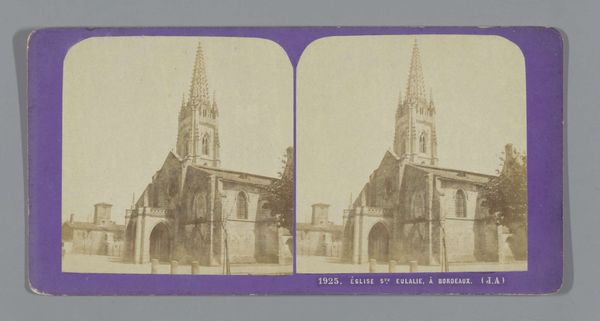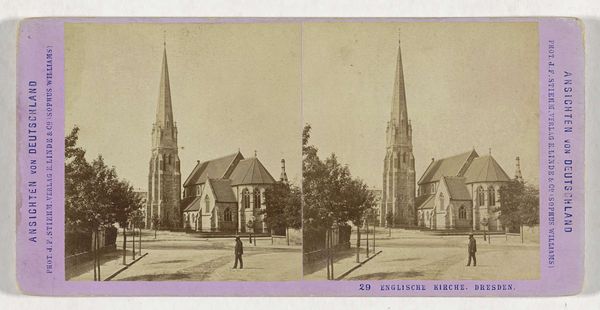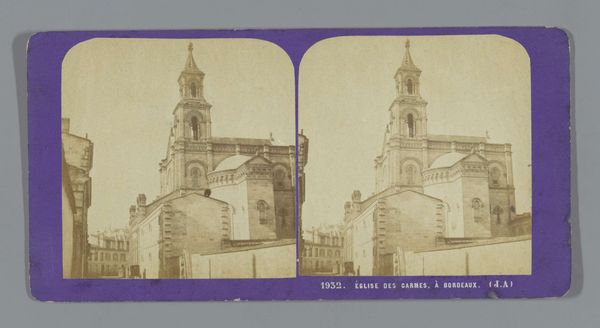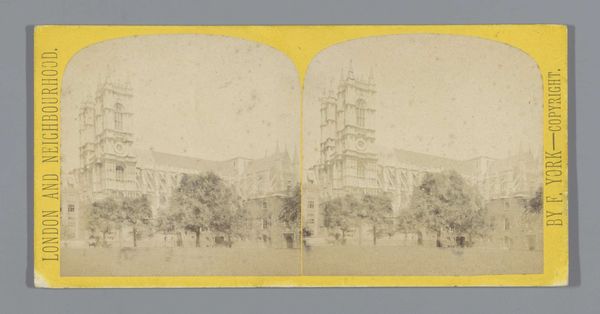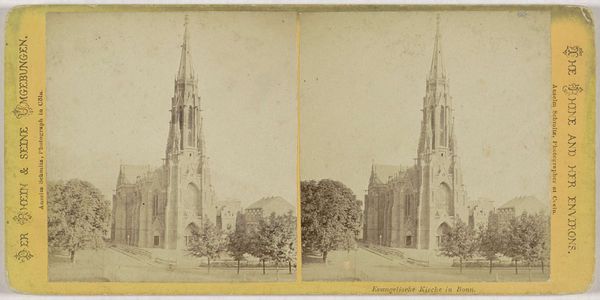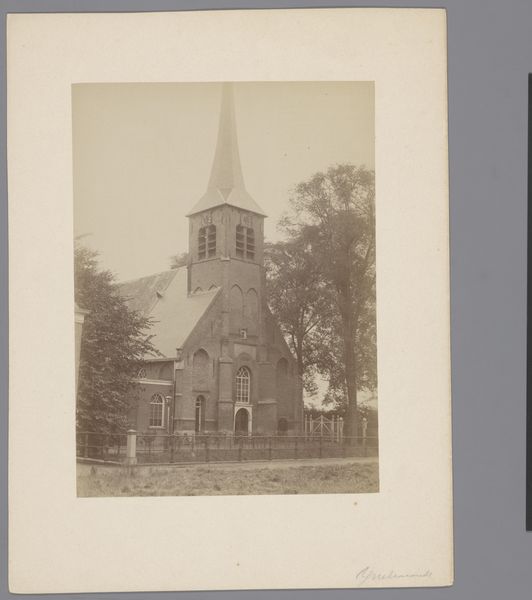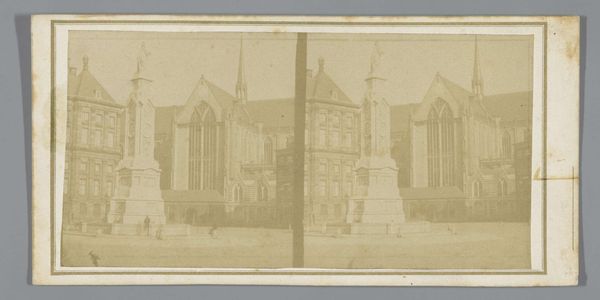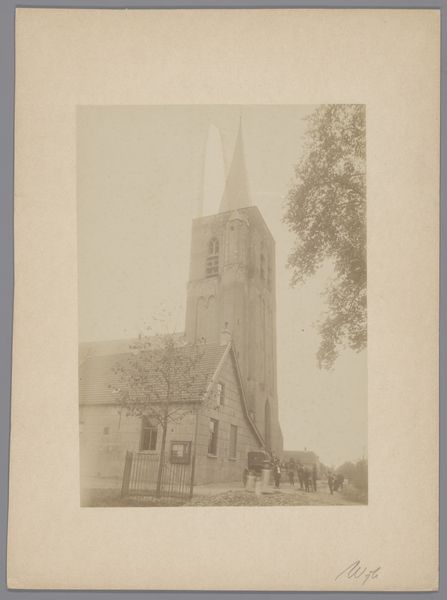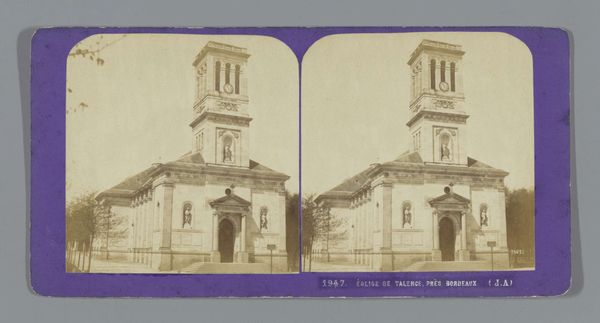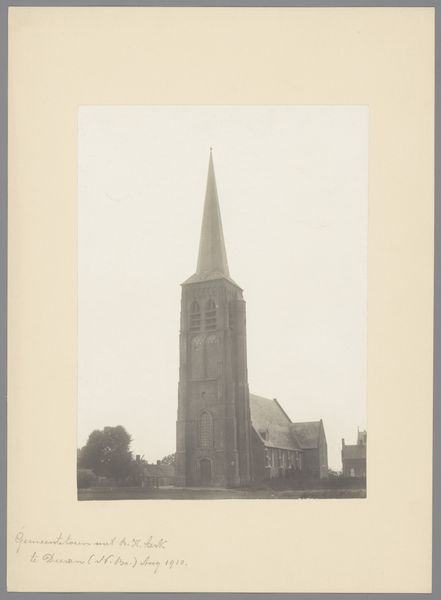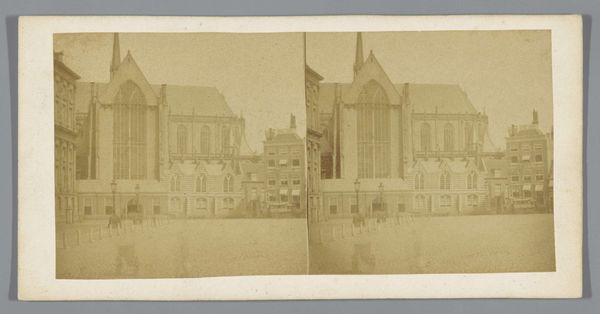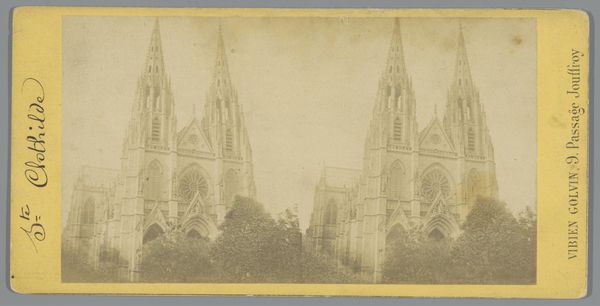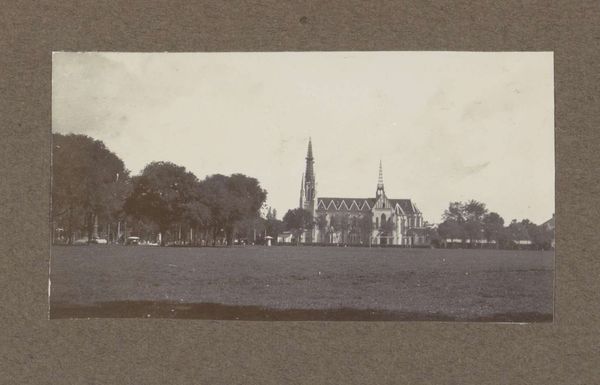
daguerreotype, photography, architecture
#
landscape
#
daguerreotype
#
photography
#
coloured pencil
#
cityscape
#
architecture
#
realism
Dimensions: height 85 mm, width 170 mm
Copyright: Rijks Museum: Open Domain
Editor: So, here we have “Voorgevel van de Basilique Notre-Dame te Arcachon,” or “Facade of the Notre-Dame Basilica in Arcachon” created sometime between 1862 and 1876 by Jean Andrieu. It's a daguerreotype, giving it this incredibly delicate, ethereal quality. What strikes me most is the basilica's height compared to its surroundings, yet the subdued tones somehow soften its grandeur. What do you see when you look at this, more than just a pretty facade? Curator: It’s like stepping back in time, isn't it? A photographic haiku, if you will. Beyond the architectural details and the soft glow of the daguerreotype, I find myself pondering the aspirations embodied in that soaring spire. Think about the time this was made—a period of immense social and technological change. Churches were physical manifestations of hope, piercing the sky, weren’t they? I wonder, does that resonate even now? Editor: I can see that. The upward thrust definitely has this yearning quality, especially juxtaposed against the relative simplicity of the surrounding townscape. It also feels staged almost like actors waiting to walk up those steps. So what do you make of this idea in relation to its religious function? Curator: Absolutely. Andriu plays the stage director perfectly, framing faith through steel and glass. Look how cleverly Andriu composes, capturing how a building embodies aspirations, freezing a spiritual concept into something permanent. Is it just a facade or something with purpose? Editor: It is strange, isn’t it? To see the architecture framed and frozen into a moment. I never would have considered the human component, thanks for pointing this out. Curator: Every old photograph is both mirror and window - to see what *was* as a reflection of what could be... makes you wonder about where photography will lead, doesn’t it?
Comments
No comments
Be the first to comment and join the conversation on the ultimate creative platform.
